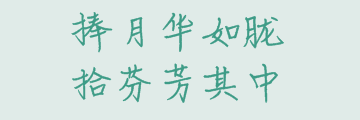[C++ STL] 迭代器(iterator)详解
一、迭代器(iterator)介绍
指针可以用来遍历存储空间连续的数据结构,但是对于存储空间非连续的,就需要寻找一个行为类似指针的类,来对非数组的数据结构进行遍历。因此,我们引入迭代器概念。
迭代器(Iterator)是一种检查容器内元素并遍历元素的数据类型。迭代器是指针的泛化,它允许程序员用相同的方式处理不同的数据结构(容器)。
1、头文件
所有容器有含有其各自的迭代器型别(iterator types),所以当你使用一般的容器迭代器时,并不需要含入专门的头文件。不过有几种特别的迭代器,例如逆向迭代器,被定义于 <iterator> 中。
2 迭代器类型
迭代器共分为五种,分别为: 输入迭代器(Input iterator)、输出迭代器(Output iterator)、前向迭代器(Forward iterator)、双向迭代器(Bidirectional iterator)、随机存取迭代器(Random access iterator)。
二、容器迭代器的使用
下面列举了些例子说明各个容器的用法:
1、vector
#include <iostream>
#include <vector>
using namespace std;
int main(int argc, char* argv[])
{
// Create and populate the vector
vector<int> vecTemp;
for (int i = 0; i<6; i++)
{
vecTemp.push_back(i);
}
// Display contents of vector
cout <<"Original deque: ";
vector<int>::iterator it;
for (it = vecTemp.begin(); it!=vecTemp.end(); it++)
{
cout <<*it <<" ";
}
return 0;
}
/*
输出结果:
Original deque: 0 1 2 3 4 5
*/
2、deque
#include <iostream>
#include <deque>
using namespace std;
int main(int argc, char* argv[])
{
// Create and populate the deque
deque<int> dequeTemp;
for (int i = 0; i<6; i++)
{
dequeTemp.push_back(i);
}
// Display contents of deque
cout <<"Original deque: ";
deque<int>::iterator it;
for (it = dequeTemp.begin(); it != dequeTemp.end(); it++)
{
cout <<*it <<" ";
}
cout <<endl;
return 0;
}
/*
输出结果:
Original deque: 0 1 2 3 4 5
*/
3、list
#include <iostream>
#include <list>
using namespace std;
int main(int argc, char* argv[])
{
// Create and populate the list
list<int> listTemp;
for (int i = 0; i<6; i++)
{
listTemp.push_back(i);
}
// Display contents of list
cout << "Original list: ";
list<int>::iterator it;
for (it = listTemp.begin(); it != listTemp.end(); it++)
{
cout << *it << " ";
}
cout << endl;
// Insert five 9 into the list
list<int>::iterator itStart = listTemp.begin();
listTemp.insert(itStart,5,9);
// Display the result
cout << "Result of list: ";
for (it = listTemp.begin(); it != listTemp.end(); it++)
{
cout << *it << " ";
}
cout << endl;
return 0;
}
/*
输出结果:
Original list: 0 1 2 3 4 5
Result of list: 9 9 9 9 9 0 1 2 3 4 5
*/
4、set
#include <iostream>
#include <set>
using namespace std;
int main(int argc, char* argv[])
{
// Create and populate the set
set<char> setTemp;
for (int i = 0; i<6; i++)
{
setTemp.insert('F'-i);
}
// Display contents of set
cout <<"Original set: ";
set<char>::iterator it;
for (it = setTemp.begin(); it != setTemp.end(); it++)
{
cout <<*it <<" ";
}
cout <<endl;
return 0;
}
/*
输出结果:
Original set: A B C D E F
*/
5、map
#include <iostream>
#include <map>
using namespace std;
typedef map<int, char> MyMap;
int main(int argc, char* argv[])
{
// Create and populate the map
MyMap mapTemp;
for (int i = 0; i<6; i++)
{
mapTemp[i] = ('F'-i);
}
// Display contents of map
cout <<"Original map: " <<endl;
MyMap::iterator it;
for (it = mapTemp.begin(); it != mapTemp.end(); it++)
{
cout << (*it).first << " --> ";
cout << (*it).second << std::endl;
}
cout <<endl;
return 0;
}
/*
输出结果:
Original map:
0 --> F
1 --> E
2 --> D
3 --> C
4 --> B
5 --> A
*/






【推荐】编程新体验,更懂你的AI,立即体验豆包MarsCode编程助手
【推荐】凌霞软件回馈社区,博客园 & 1Panel & Halo 联合会员上线
【推荐】抖音旗下AI助手豆包,你的智能百科全书,全免费不限次数
【推荐】博客园社区专享云产品让利特惠,阿里云新客6.5折上折
【推荐】轻量又高性能的 SSH 工具 IShell:AI 加持,快人一步
· 没有源码,如何修改代码逻辑?
· 一个奇形怪状的面试题:Bean中的CHM要不要加volatile?
· [.NET]调用本地 Deepseek 模型
· 一个费力不讨好的项目,让我损失了近一半的绩效!
· .NET Core 托管堆内存泄露/CPU异常的常见思路
· 微软正式发布.NET 10 Preview 1:开启下一代开发框架新篇章
· 没有源码,如何修改代码逻辑?
· NetPad:一个.NET开源、跨平台的C#编辑器
· PowerShell开发游戏 · 打蜜蜂
· 凌晨三点救火实录:Java内存泄漏的七个神坑,你至少踩过三个!